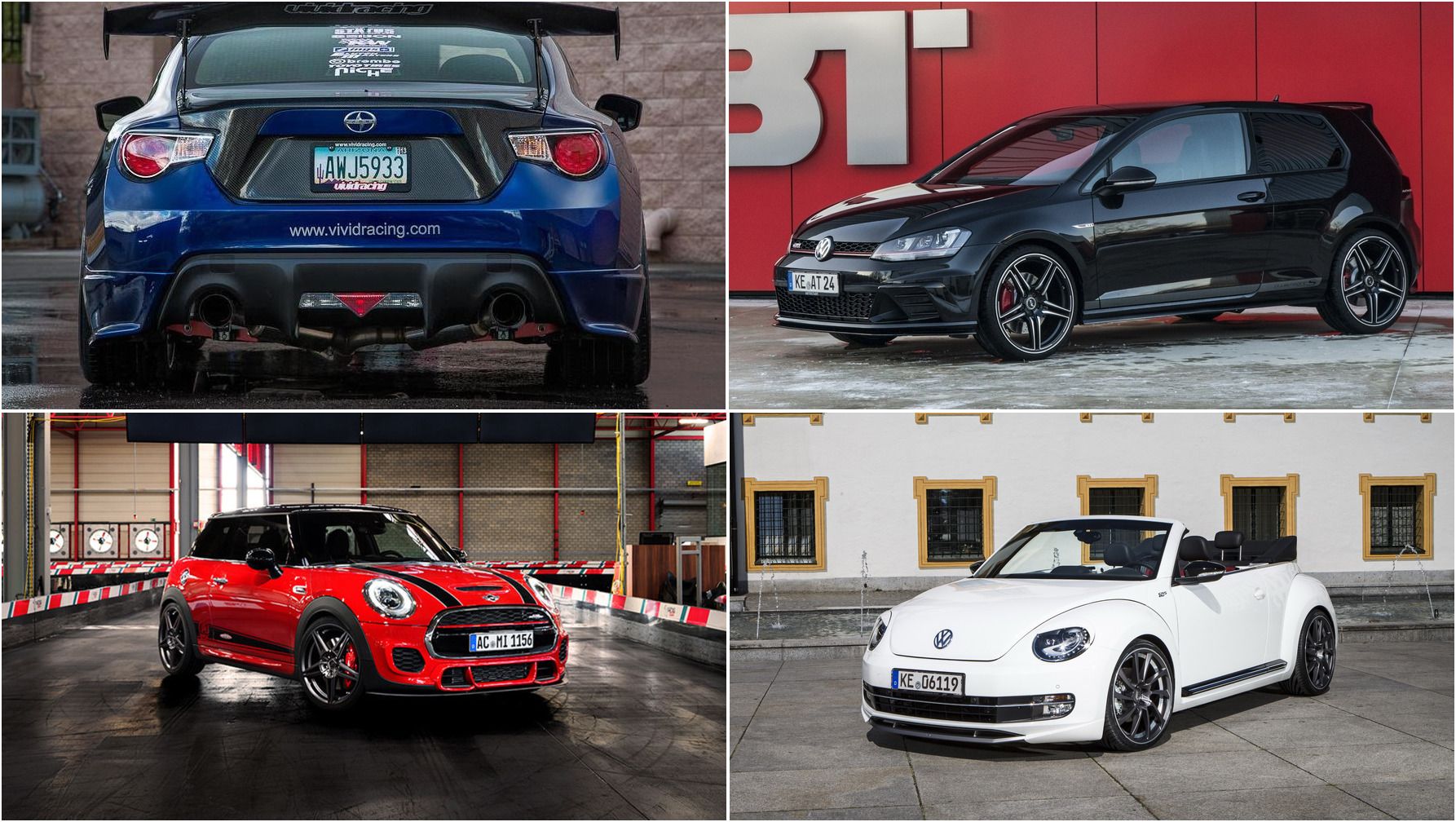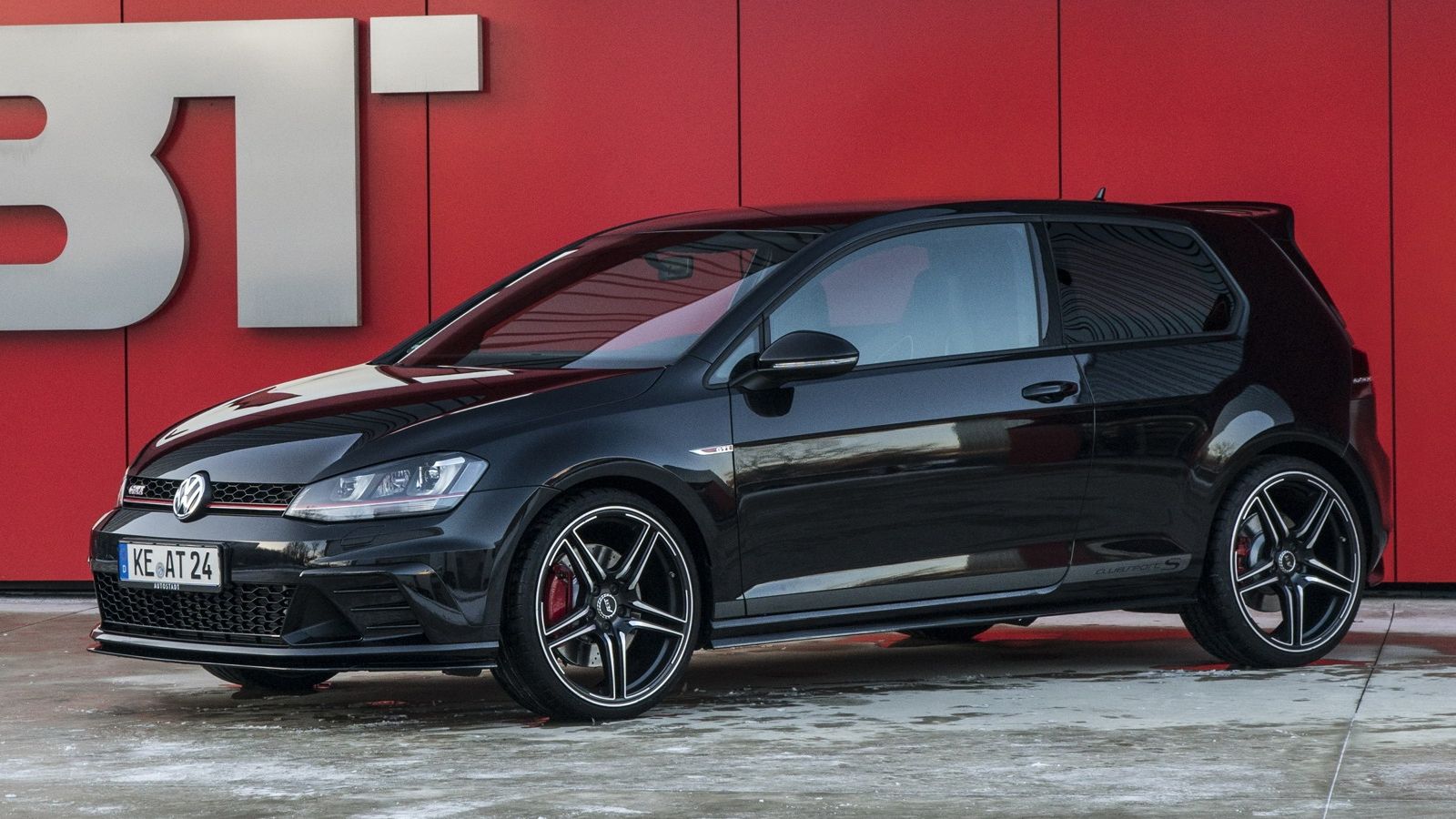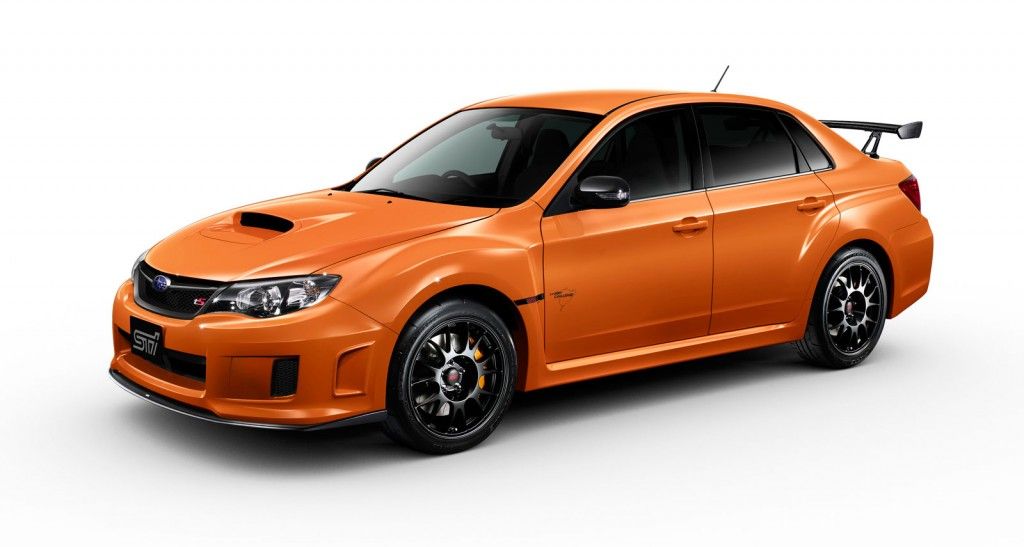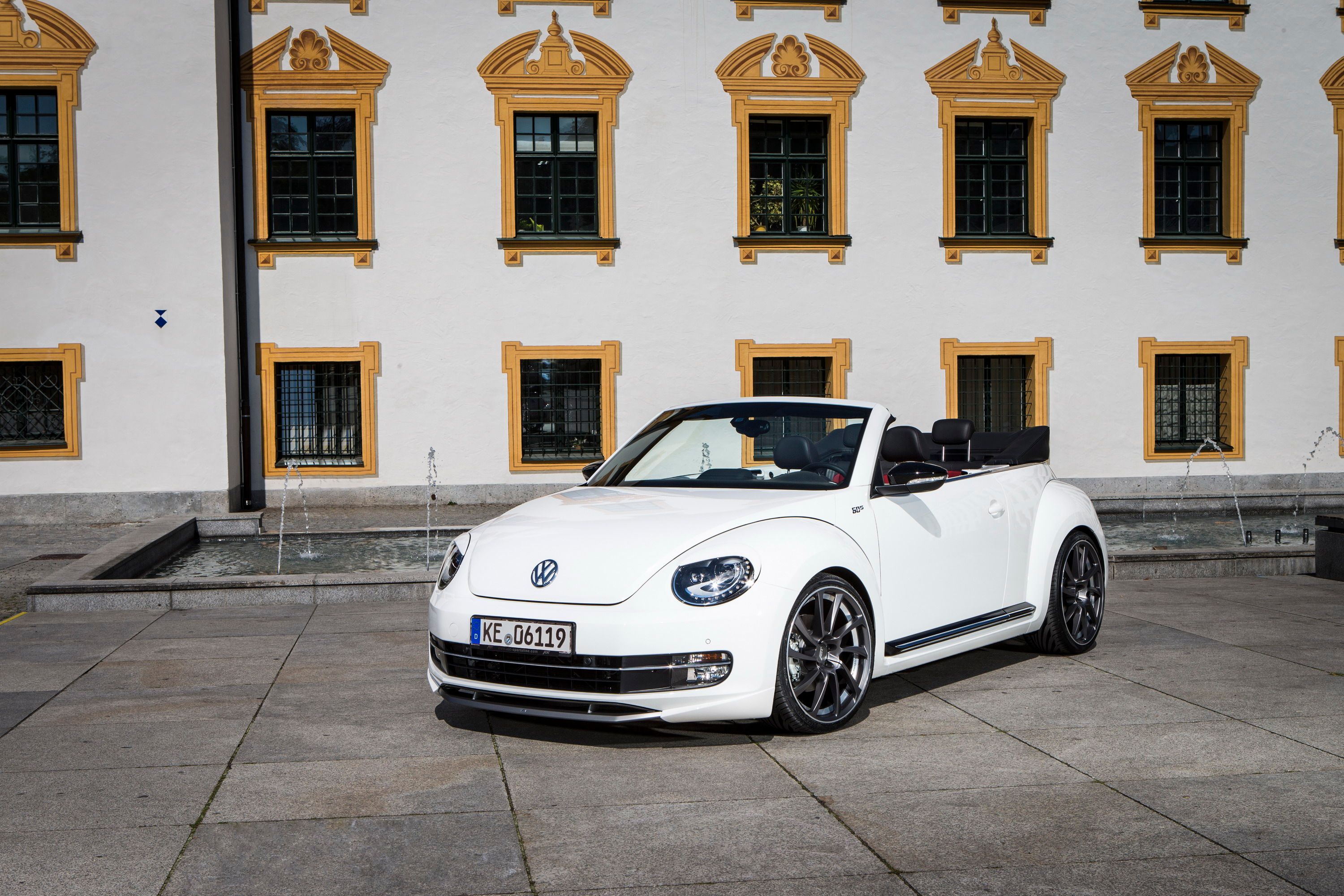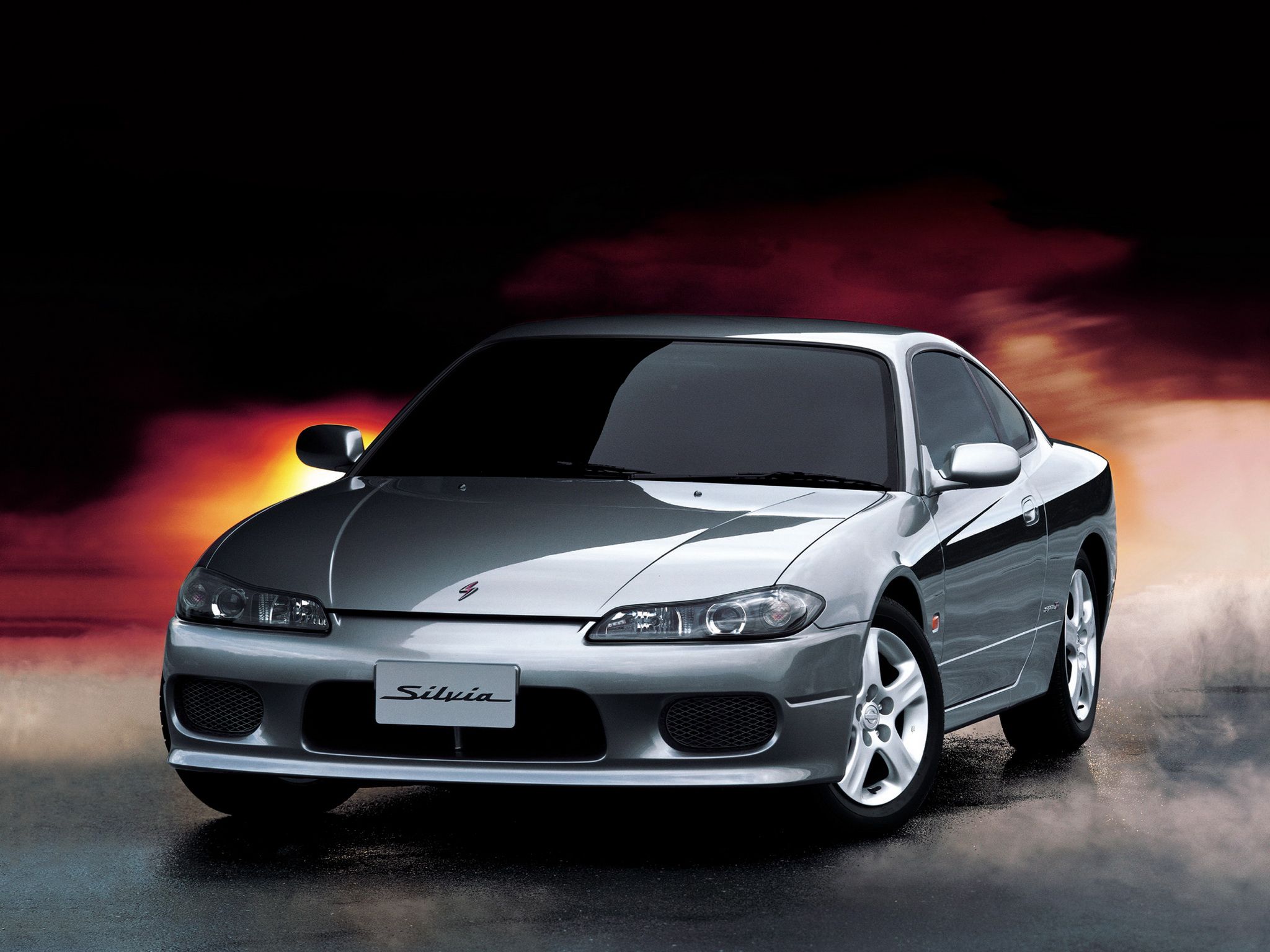For as long as automobiles have been around, tuners have never been too far behind. These companies are the ones you go to when you want to get more out of your factory-stock vehicle. Tuners come in all shapes and sizes, too. Some are famous for their outlandish tuning programs while others specialize in those subtle upgrades that add up to create a compelling package. The goal of these aftermarket companies is to provide something better than what automakers are willing to give. In turn, modifying cars has become an art form as much as it is a business.
Still, a tuner is only as good as the car that it’s working on. Whereas most cars are perfectly suited for customers once they leave the factories, some are begging to be modified. Whether it’s an old Japanese sports car, a classic German icon, or an Italian thoroughbred, there are cars that, no matter in what form they come out of those factories, become all the more appealing once they receive the aftermarket treatment. Even better, some of these cars can be had for rock bottom prices, making them perfectly suited for tuners all over the world.
Toyota 86/Scion FR-S/Subaru BRZ
When Toyota and Subaru launched the 86 and BRZ sports cars, respectively, a lot of people, myself included, were somewhat disappointed by their power and performance numbers.
What a lot of people didn’t know at that time was the 86, BRZ, and the Scion FR-S (the third member of the family), were — and continue to be — ideal vehicles for the aftermarket world.
Since all three sports cars arrived in 2012, tuners from all over the world have taken liberties developing programs and packages that helped maximize the potential of all three sports cars. A lot of the aftermarket programs that have been developed for the 86, BRZ, and FR-S focused more on raising engine output to levels that would justify the sports car identity of these models. We’ve seen so many of them over the years, and some tuners have even taken the bold step of turning these models into over-the-top drag and street racers.
Read our full review on the Toyota 86/Scion FR-S/Subaru BRZ
Mazda RX-7
The Mazda RX-7 is another Japanese sports car that's considered an aftermarket favorite. The same can actually be said for the RX-8, but for the purpose of this list, we’ll highlight the RX-7 instead.
So, what makes Mazda’s lightweight sports car the apple of many tuners’ eyes? The obvious answer is untapped potential, particularly when it comes to the plethora of engine options that the RX-7 came with. Suffice to say, a lot of the lightweight Wankel rotary engines that Mazda used in the RX-7 could be tuned to develop more power, making them ripe for engine upgrade programs. We’ve seen a lot of examples throughout the years of RX-7s destroying modern sports cars in drag races. Standard models of the Mazda sports car couldn’t do that. But with the help of tuners, anything became possible with the RX-7.
Engine upgrades aside, you only need to look at the sports car to understand what other tuning options can be done to the RX-7. From outlandish body kits to subtle aero upgrades, nothing was left off the table when it came to developing tuning kits for the RX-7.
Read our full review on the Mazda RX-7
Volkswagen GTi
The seventh-generation GTI packs 207 horsepower from the factory. Imagine, then, what tuners are capable of when they get their hands on the hot hatch.
To give you a glimpse of what you can expect from a tuned Golf GTI, noted German tuner ABT Sportsline prepared a tuning kit for the GTI Mk VII back in 2017. That program consisted of significant upgrades to the body, chassis, suspension, and engine of the Golf GTI.
Aerodynamic bits were added to the hatchback while the chassis and suspension were toughened up as well. ABT also installed its Power Up! software module, rising the output of the Golf GTI’s 2.0-liter turbocharged four-cylinder engine to an attention-grabbing 290 horsepower. ABT Sportsline’s program for the Golf GTI Mk VII is just one example of the many aftermarket kits available for the hot hatch.
Read our full driven review on the Volkswagen GTi
Subaru WRX
The Subaru WRX has always been eye candy for tuners. The four-door sports sedan already boasts impressive performance capabilities, but as we have learned through all the many tuning programs that have been developed for the WRX, there’s still enough room to tap into.
That kind of power is suitable in it of itself, but when there are opportunities to coax more horses out of that engine, aftermarket tuners have been quick to jump at those opportunities.
The WRX is also an attractive tuner car in other aspects. It’s presented with the kind of template where improvements in aerodynamics and suspension setups could help the WRX improve its overall performance credentials. Aftermarket companies from all over the world have been infatuated with the WRX for a long time, and for as long as it’s around, that sentiment will hold true.
Read our full review on the 2018 Subaru WRX
Nissan 240SX
There’s a reason why a lot of Japanese sports cars are on this list. While it’s not always the intent, Japanese automakers typically build sports cars with appropriate amounts of power and performance. But there’s also a lot of untapped potential with these cars, and that untapped potential is what tuners look for.
Those aren’t world-beating figures, but they still provide reasonable performance capabilities.
Then again, reasonable performance capabilities don’t fly with aftermarket tuners, and when there are requests to increase the 240SX’s engine performance, these tuners are more than happy to accommodate these requests. It helps a lot that customers can score a used 240SX for under $10,000 depending on the model year and mileage of a specific model.
That means you’re not going to spend too much if you’re going to buy a 240SX for the specific purpose of giving the sports car the aftermarket treatment. Outside of engine upgrades, the 240SX is also ripe for aerodynamic upgrades, as well as other mechanical improvements.
Volkswagen Beetle
Don’t be fooled by the Volkswagen Beetle’s appearance; the lovable hatchback is a tuner favorite. We’ve seen a lot of these Bugs — mostly the classic ones — with missing trunk hatch flaps and engines sticking out. Those aren’t standard-issue Beetles, folks. Those Beetles have been through the aftermarket wringer, and they’re not the type of Bugs that you want to go against on a drag strip.
The reality is that Beetles are some of the customizable cars that you’ll see in the market. They can be transformed into anything; the only limits are your creativity and purpose. A Beetle race car? Sure! A sand dune marauder? That can be arranged. You can even turn them into a monster on the road, provided that you can manage the costs that come with that kind of transformation. Fortunately, the cost of buying a Beetle and the corresponding aftermarket upgrades that come with it won’t burn holes in your pockets.
Read our full review on the Volkswagen Beetle
Mazda RX-8
We mentioned the Mazda RX-8 earlier and there’s a good reason why the sports car is on this list.
But the truth is that the RX-8 was once plagued by so many issues that it became difficult to enjoy one after owning it for a few years. Whether it was issues with power steering or simple lack of meaningful power — the first-gen RX-8 was powered by a 1.3-liter four-cylinder Wankel engine that produced 191 horsepower and 159 pound-feet of torque — there was always something about the RX-8 that Mazda could’ve done to make it a better car.
Fortunately, Mazda’s loss turned into the aftermarket world’s gain. Tuners from all over the world have taken repeated stabs at creating tuning kits for the RX-8. Whether those upgrades involved upgrading the sports car’s mechanicals or raising the output of the Wankel unit, there were many ways — it still holds true today — to raise the stature of the RX-8.
Read our full review on the Mazda RX-8
Nissan Silvia
The Nissan Silvia was sold as the 200SX in North America, but the actual Silvia remained a Japanese model throughout its life.
More importantly, we’ve seen a lot of modified Silvias, a product of the fascination the aftermarket world has for the Nissan sports car.
The Silvia makes for a great tuner car, in part because it’s easy to customize because of its overall design and layout. Having the engine in the front means that tuners don’t have to worry too much about balancing the car’s weight in the front and back. This leads to more straightforward tuning upgrades, and from what we’ve seen of modified Silvias, tuners have wasted little time in turning what was once forbidden fruit for Americans into aftermarket desirables.
Mini Cooper
The MINI Cooper is yet another example of a factory-built car with so much untapped potential. That’s why it’s another aftermarket favorite among tuners of all shapes and sizes. There are so many different ways to go when it comes to creating an aftermarket program for the MINI Cooper.
All these things are on the table as far as the Cooper goes. Having the engine in the front is a huge plus for tuners and these same aftermarket companies have also shown that creating an aftermarket tuning kit for the Cooper doesn’t have to revel around an engine upgrade. We’ve seen aerodynamic kits on Coopers. We’ve seen suspension upgrades on Coopers. Heck, we’ve even seen Coopers that have been turned into 500-horsepower monsters of epic proportions. Nothing is off-limits when it comes to creating a tuning program for the Cooper. Only your imagination.
Read our full review on the Mini Cooper
Honda S2000
What is there to say about the Honda S2000’s tuning potential that hasn’t been said already? The Japanese roadster is one of the most tuner-friendly cars in the market today. A used model is cheap — you can get a decent one for less than $20,000 — and the tuning options available to the S2000 are endless. It helps that the roadster already comes out of the factory wrapped in a slick and stylish design. That allows tuners to build on what’s already there without having to change the entire look of the roadster along the way. There’s a reason why aero kits for the S2000 are largely kept subtle. There’s no reason to be extravagant with those.
On the engine front, we’ve seen what tuners are capable of in this department.
That figure is already 60 horsepower more than the stock S2000’s engine output. Imagine the possibilities when a tuner doesn’t limit its engine upgrade program to just 300 horsepower. For a car that’s as beloved by Honda fans as any other model wearing the Japanese automaker’s badge, aftermarket tuners are just as smitten with the Honda S2000. That’s been the case for a long time, and it sure as heck will be the case moving forward.
Read our full review on the Honda S2000

